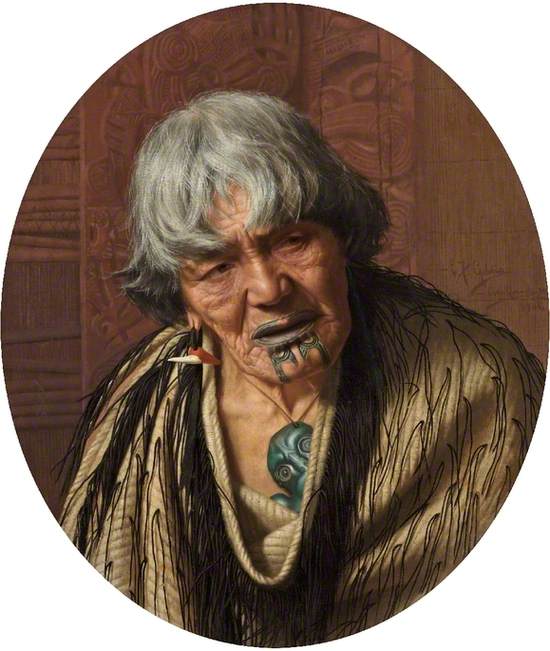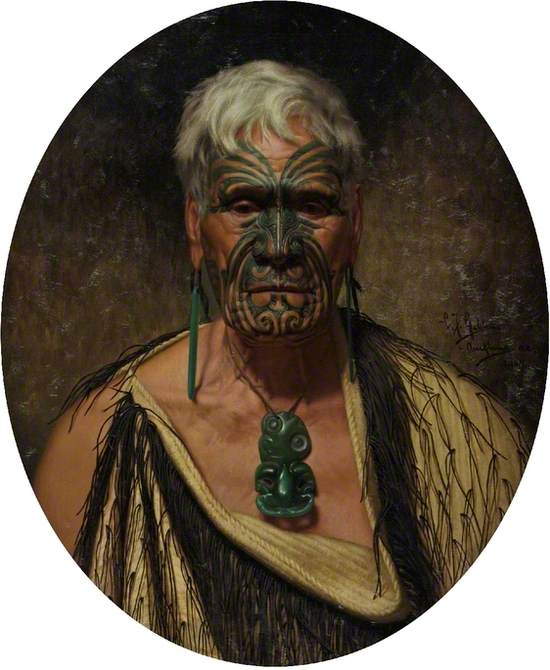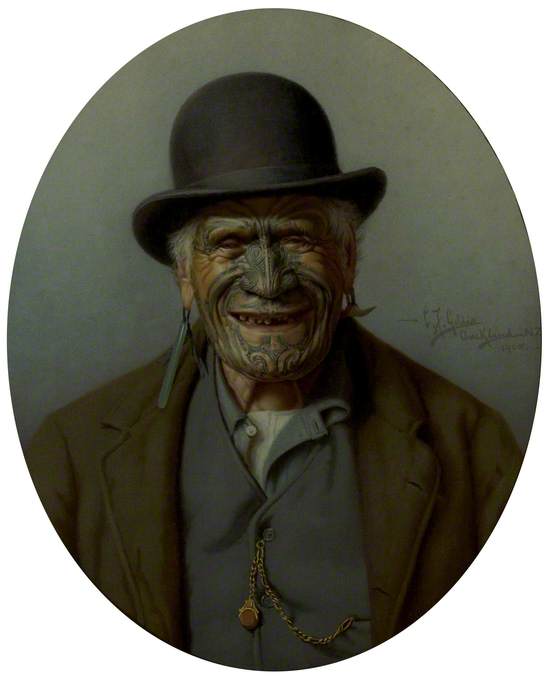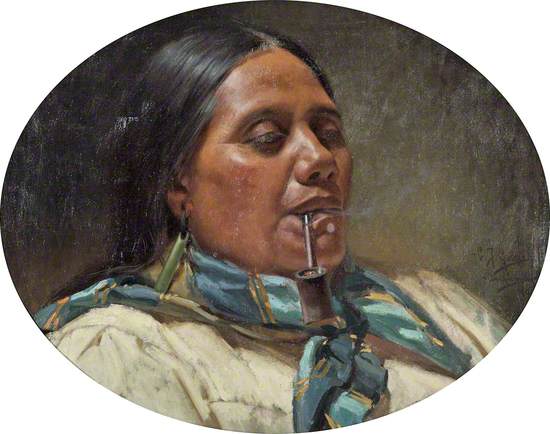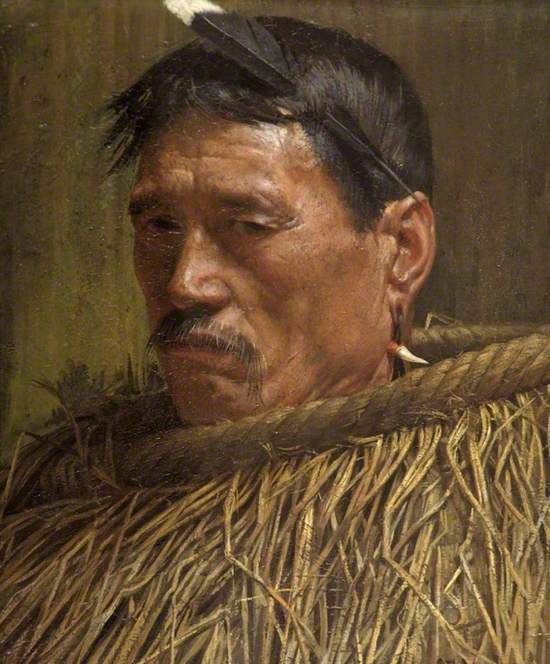New Zealander Charles Goldie, along with Gottfried Lindauer (1839-1929), helped define how the Maori people of New Zealand were seen by the outside world. After showing artistic talent at school and training under Louis John Steele (1842-1918) he went to the Académie Julian and visited art collections across Europe before returning home. He became devoted to Maori portraiture, developing friendships with his sitters and recording their culture. After his death, Goldie’s reputation suffered from a new focus on Modernism in New Zealand. He was also incorrectly perceived as a patronising imperialist, despite the Maori people always valuing his depictions of them, until the pioneering work of art historian Roger Blackley (1953-2019).
A Māori Chieftainess (Harata Rewiri Tarapata, 1831–1913) 1906
Charles Frederick Goldie (1870–1947)
Oil on canvas
H 61 x W 51 cm
Russell-Cotes Art Gallery & Museum
Te Aho Te Rangi Wharepu (1811–1910) 1907
Charles Frederick Goldie (1870–1947)
Oil on canvas
H 73 x W 59.5 cm
Russell-Cotes Art Gallery & Museum
Allee Same Te Pakeha (A Good Joke) – Te Aho Te Rangi Wharepu (1811–1910) in European Costume 1905
Charles Frederick Goldie (1870–1947)
Chromolithograph on paper
H 38.5 x W 30.5 cm
Russell-Cotes Art Gallery & Museum
Kai Paipa or Māori Woman (Katerina Nikorima) 1903
Charles Frederick Goldie (1870–1947)
Oil on canvas
H 37.5 x W 46.5 cm
Russell-Cotes Art Gallery & Museum
Charles Frederick Goldie (1870–1947)
Oil on board
H 28 x W 22.6 cm
Russell-Cotes Art Gallery & Museum
